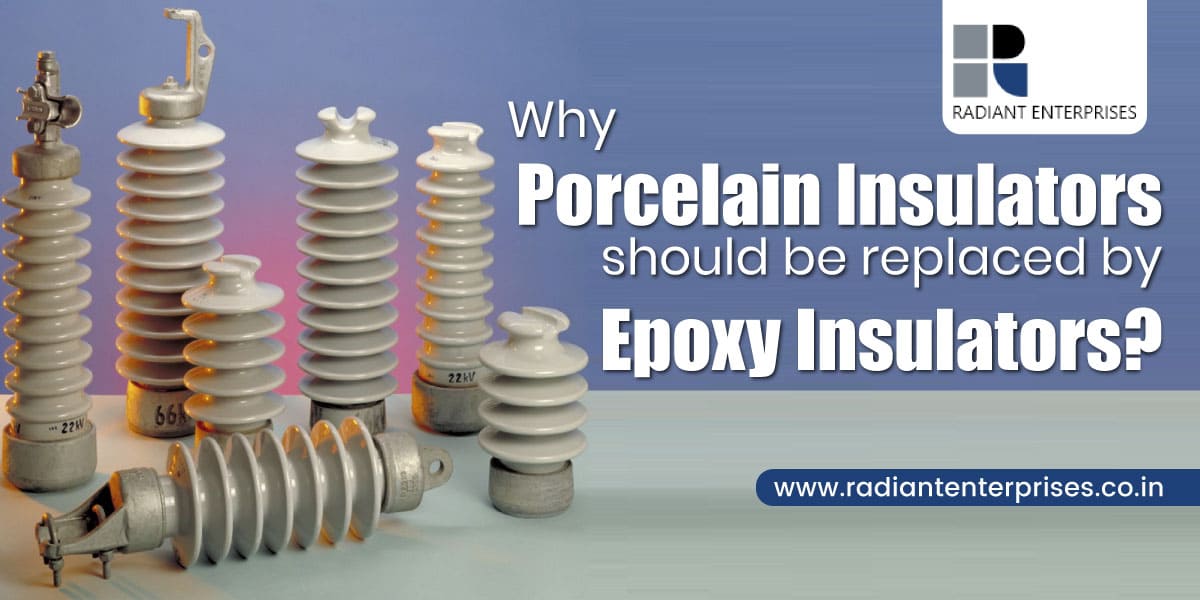
08
Mar 22
What Is Porcelain Insulator?
In electrical transmission and distribution networks, porcelain insulators are the most extensively used insulator. Porcelain insulators permit ongoing operation at the required voltages in everything from salty seashore substations to highly corrosive petrochemical operations along the equator.
What Is Epoxy Insulator?
Hardener and Epoxy glue are usually used to build an electrical insulator. Insulators could be made with indoor epoxy resin systems, such as anhydride hardener and Bisphenol A-epichlorohydrin resin, or outdoor resin epoxy systems, such as hardener and cycloaliphatic epoxy resin.
Physical Advantages Of Epoxy Insulators Over Porcelain Insulators:
-
Epoxy makes up less than 70% of the weight of porcelain.
-
Epoxy has nearly 11 times the tensile strength of glazed porcelain.
-
Epoxy has a compressive strength 4 to 6 times that of glazed porcelain.
-
Epoxy has 16 to 18 times the flexural strength of glazed porcelain.
-
Epoxy is easier to manage in terms of dimension and shape than porcelain.
-
Porcelain is unrepairable, whereas Epoxy has a limited reparability.
-
Epoxy Insulators don't require any assembly.
-
When compared to porcelain, it is more resistant against ultraviolet light.
Electrical Advantages Of Epoxy Insulators Over Porcelain Insulators:
-
Epoxy has a dielectric constant that is about 2/3 that of porcelain.
-
Porcelain has a higher partial discharge than epoxy.
-
Epoxy has a thermal coefficient of expansion that is one-twentieth that of porcelain.
-
Epoxy insulators are non-tracking, self-scoring, and non-weathering, thus they will operate well in a wide range of conditions, even extremely contaminated regions. Porcelain
-
Because epoxy insulators are end free, and porcelain insulators have metal caps, they have a longer dry arcing (strike) distance than porcelain insulators.
-
Epoxy insulators can also withstand high-power arcs without being damaged or requiring post-arc 'cleanup.'
COST ADVANTAGES OF USING EPOXY INSULATOR:
|
Cost Advantage of using Epoxy Insulator |
Chart Based on assumptions of 15kv - 30kv Insulator |
|
Item Name |
Porcelain Insulator |
Epoxy Insulator |
|
Acquisition cost |
$75 |
$150 |
|
Cure time of seal per Insulator |
24 hrs. |
0 hrs. |
|
Crack Ratio Due To Thermal Shock |
18% |
5% |
|
Rejection Ratio |
25% |
8% |
|
Product replacement after 2 - 3 years due to Physical breakage or low product strength |
As porcelain is unpreparable, it must be fully replaced, hence incurring more time and labour costs |
Epoxy can be partially repaired. Moreover, the strong physical properties of epoxy doesn’t cause it to be replaced after 2-3 years, also considering less rejection ration |
|
Life Cycle Cost (LCC) LCC = Purchase cost + Replacement cost + lifetime wash cost |
$75 + $75 + $10 = $160 |
$150 + $0 + $10 = $160 |
|
TOTAL COST AFTER 2-3 YEARS |
$320 |
$160 |
Other Factors:
-
70% less weight
-
Superior Strength
-
No cracking or leaking
-
More compact and flexible design
-
Minimal cost
Cracks Developed After Long Use Of Porcelain Insulators



